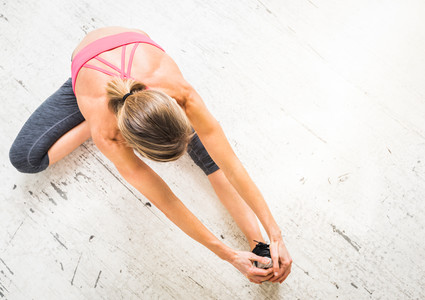




Healthy Lifestyle
A Dynamic Warm-Up Can Prepare You for Exercise While Reducing Injury Risk


 Most of us will agree that diving into vigorous activity or sports without warming up is a recipe for trouble. What we may not agree on is what constitutes a proper warm-up.
Most of us will agree that diving into vigorous activity or sports without warming up is a recipe for trouble. What we may not agree on is what constitutes a proper warm-up.
So what’s the most effective way to prevent injuries and improve performance? The answer may surprise you.
Static stretching has its limits
Static stretching – like the traditional reach-and-hold movements from your youth – has long been popular as the way to prepare for exercise.
But it may not be an appropriate way to warm up for high-level activity. While static stretching can help with flexibility, research is inconclusive on whether it’s effective for preventing exercise-related injuries.
Dynamic warm-ups gain popularity
If you follow Husker football and other local sports teams, you may have heard the phrases “dynamic warm-up” and “active warm-up” used more frequently over the past few years. Those teams are on to something.
A dynamic warm-up routine is a series of movements performed in a progressive, deliberate sequence. It can be a good way to prepare your body for activity and reduce the risk of injury.
Dynamic warm-up basics
I want to empower you to create your own safe and appropriate dynamic warm-up based on the activity you’re going to do. Here are some general rules to follow:
- The warm-up should raise your core temperature. Remember, if you’re sweaty, you’re ready. This should be a gradual process over 10-15 minutes.
- It should involve multiple moving body parts and functional (real-life) movement patterns.
- It should start out easy, progressing from low to moderate intensity.
- The speed of movements should start out slow, increasing to a moderate speed (or faster if you’re doing a sprint or high-speed workout).
- Special attention should be made to “at risk” areas such as shoulders, spine and neck if you’re doing a high-intensity exercise or combat sport.
- You should also address the “essential functions and skills” of the activity. Your warm-up should involve proper agility activities that imitate your activity; make use of special equipment involved in your activity (balls, clubs, etc.); and include specific surfaces of your activity (grass, dirt, mats, wood floor, etc.).
 Sample warm-up
Sample warm-up
So what’s this look like in everyday life? Let’s break it down with an activity where my wife and I violated the “gradual warm-up” rule and strained our hamstrings — a family kickball game.
First, consider the essential parts of kickball: running, throwing and kicking. They’re all there, sometimes at high intensity.
No amount of warming up will make me impervious to injury. But here’s a list of exercises that would be appropriate before playing kickball again.
Running/sprinting prep
- Jog/High knee walk/High knees, slow to fast/Butt kicks, slow to fast/Slow lateral shuffle/Crossovers
- Lunge walk/Leg hugs
- Change of direction drills
Kicking
- Single leg kicks
- Over the fence kicks
Throwing
- Jumping jacks/Bear crawls/Reverse bear crawls
- Throwing warm-up (short, medium and long distances)
Essential skills (putting it all together)
- Drills involving catching, kicking and throwing on the run at slow, medium and fast speeds
- Teamwork drills
Whew! What a workout … I mean, warm-up.
This may sound like a lot just to get ready for exercise, but don’t be intimidated. Most people aren’t involved in activities that require a lot of skilled movement. Your goal is to focus on what you’re comfortable with.
If you’re unsure what any of the above warm-up exercises are, there are numerous example videos online. Here’s one of my favorites with 21 examples.
Find a warm-up that works for you
Regardless of your activity and fitness level, preventing injury should be a primary goal. If you’re just starting an exercise program, it may be a good idea to meet with your Methodist Physicians Clinic primary care provider. And depending on your activity goals, a personal trainer may be able to help you plan an appropriate warm-up.
With a little time and effort, you can analyze your activity and create a dynamic warm-up that gets you ready to go.
More Resources
- Find more diet, exercise and safety tips in the Healthy Lifestyle section
- Read about what else it takes to prevent injury in the cold
- Learn more about Methodist Physicians Clinic Physical Therapy services


